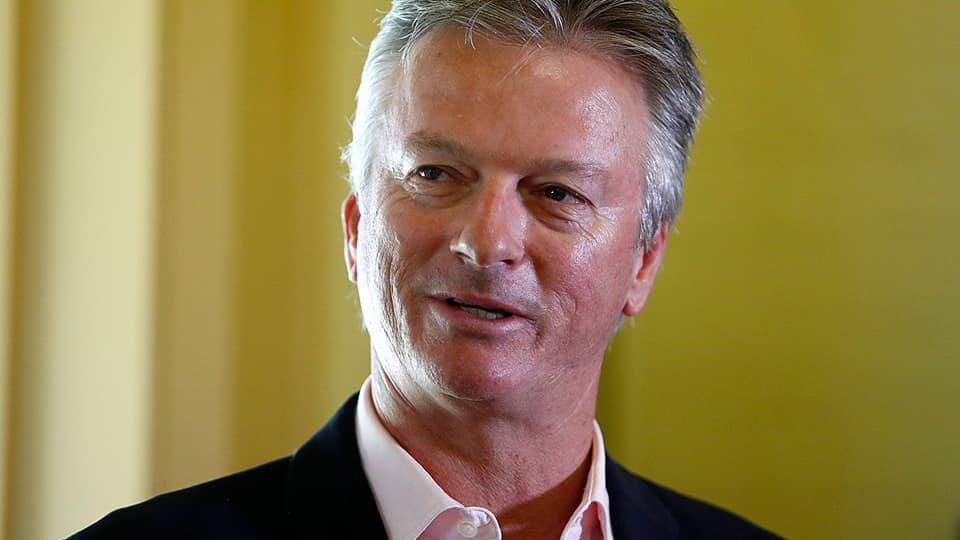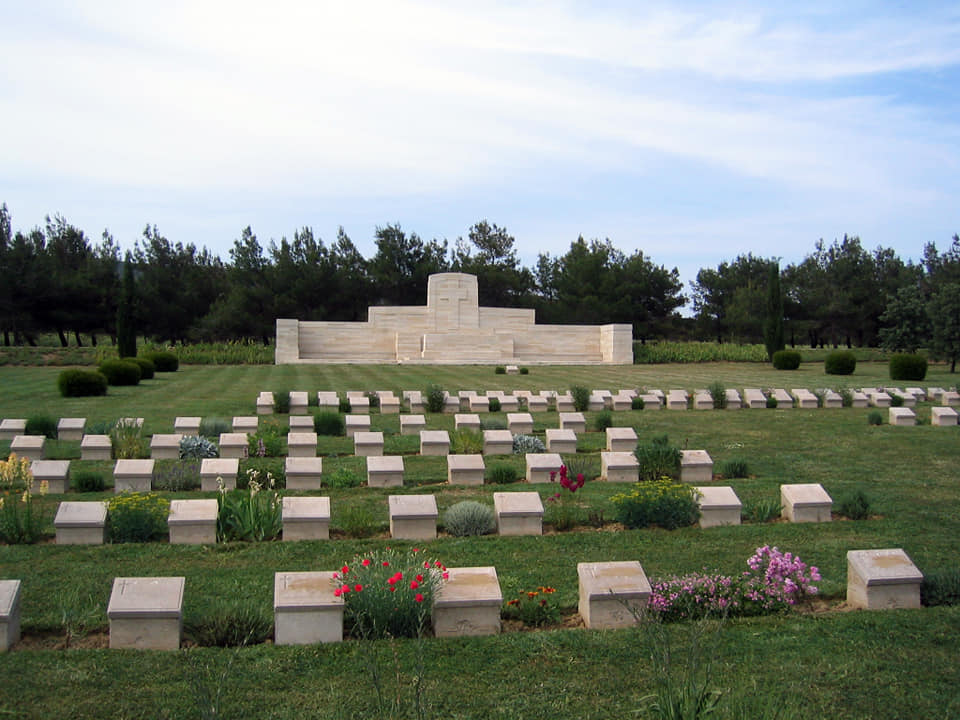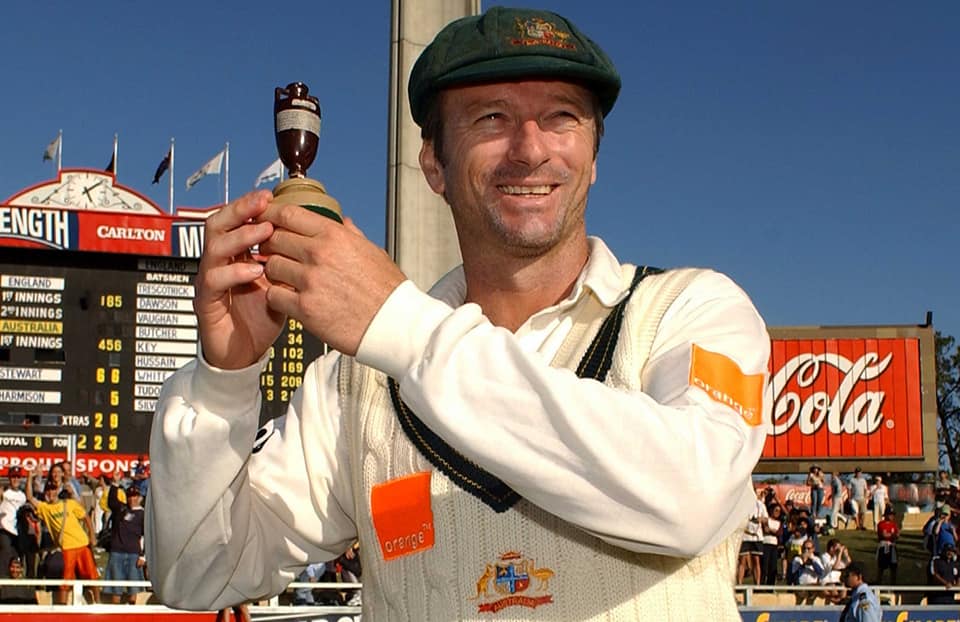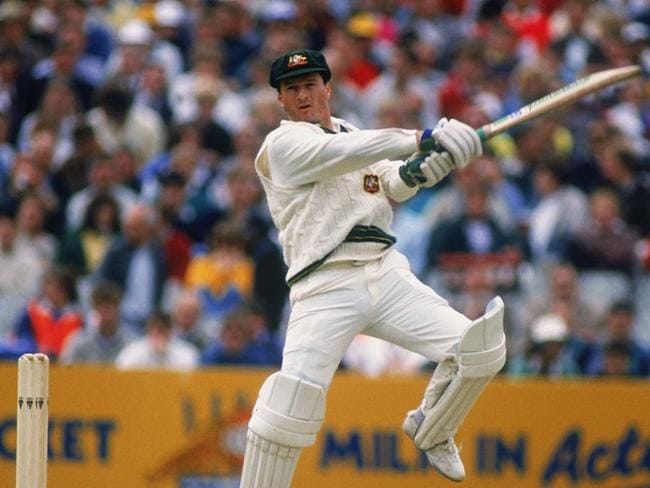Last Updated on August 17, 2024

Saying that Steve Waugh is a great all-rounder player to have come out of Australia is doing him an injustice. In reality, he is not only an exceptional batsman, bowler, and wicketkeeper, but also the greatest captain to have emerged in the history of Test cricket.
In 1999, Steve Waugh took on the captaincy of the Australian team, leading it until 2004, for a period of 5 years. During that time, he transformed the Australian team, which had been in decline, into the greatest cricket team in the world.
Under his leadership, Australia won 16 consecutive Test matches. To this day, no one has been able to break this record. Out of the 57 Test matches he captained, he led the team to victory in 41, lost 9, and drew 7, achieving a win percentage of 71.93%. He remains one of the most successful Test cricket captains in history. Additionally, he led Australia to victory in the 1999 Cricket World Cup, further contributing to his legacy.
Steve Waugh is a leader endowed with tremendous mental strength. Although he has no personal conflicts with any player, he is a leader with a strong determination to overcome all forms of opposition within the field and to drive his team towards victory.
He initially uses remarkable methods to build the mental strength and boost the self-confidence of his team members.
In 2001, as the Australian team was heading to England to participate in the Ashes series, he took his team to the Gallipoli Peninsula Cemetery, located near Turkey.

The Gallipoli Peninsula is a historic memorial cemetery site where approximately 8,700 Australian soldiers who fought alongside New Zealand forces as part of the Allied troops in 1st World War 1915. This is the memorial site that Steve took his team to visit.
For about an hour, he allows his team members to walk among the memorials of their past heroes, giving them the opportunity to reflect on the sacrifices made by these historical figures.
He wants his players to understand the importance of playing for their country and to instill in them a sense of self-belief and confidence.
This idea came to Steve as a result of a dinner he attended with Lieutenant-General Peter Cosgrove, who had been honored as Australian of the Year. During their conversation, they exchanged views on common themes between the military and cricket, and this exchange led to the idea.
Steve believed that, whether for a military unit or a cricket team, facing opposition requires meticulous planning, mutual understanding, cohesion, and a shared understanding of the strategy among all members.
He wanted to show his team members that demonstrating unity, approaching their tasks with respect, and building self-confidence could be effectively achieved by highlighting the sacrifices made by past heroes.
Regarding this, Steve Waugh expressed his thoughts by saying,
People call us heroes. But we are just playing a game. We may be good at it, but those who actually fought are greater heroes than us. They deserve that honor. While this journey was a great experience for the players, we can’t even begin to fathom the horrific events, the people who died, and the conditions faced by the wounded in the past.
During that tour, Australia won both the Test and One Day International series. This marked the beginning of their resurgence as an unbeaten, successful team. Furthermore, it was Steve’s exceptional leadership qualities that enabled him to hand over a highly successful team to Ricky Ponting, who took over the captaincy after Steve.
Not only that, typically a captain undermines opponents mentally through tactics such as delivering balls, fielding, and sledging. However, Steve went beyond such traditional methods and paid greater attention to alternative strategies. He used aggressive, fast-paced batting to instill psychological fear in his opponents.
In 2001, the Australian team had an average run rate of 3.77 runs per over in the Test matches they played. In 2002, this increased to 3.99. There has been only one instance in Test history where this run rate was exceeded, which was in 1910 when the Australian team recorded a scoring rate of 4.47 runs per over.
Under Steve’s leadership, whether it was the first over of a match with three wickets down for ten runs, or a situation with no wickets down for 200 runs, the team maintained a consistent pace of scoring throughout the day. They continued to aggressively accumulate runs and aimed to mentally break the opponents with their batting. Even when a fielder came in as the sixth player to bat, Steve used the strategy that the new batsman should maintain the same aggressive pace as the first six batsmen.
By not using pace merely to captivate attention, he focused on disorienting the opponents and instilling psychological pressure, which led to Australia’s success.
This is why he remains one of the most successful captains in the history of Test cricket to this day.
Sinhala Version
ස්ටීව් වෝ: සොහොන් පිටියෙන් වැඩ ආරම්භ කළ ලොව විශිෂ්ටතම ටෙස්ට් නායකත්වය
ස්ටීව් වෝ (Steve Waugh) කියන්නෙ ඕස්ට්රේලියාවෙන් බිහිවුනු විශිෂ්ටතම තුන් ඉරියවු ක්රීඩකයෙක් කියල කීවොත් ඒක ඔහුට කරන අසාධාරණයක්. ඇත්ත්ටම ඔහු දක්ෂ පිතිකරුවකු, පන්දු යවන්නකු, පන්දු රකින්නකු පමණක් නොව එදා මෙදා තුර ටෙස්ට් ක්රිකට් ඉතිහාසයේ පහළවූ විශිෂ්ටතම නායකයා.
1999 වසරේදි ඕස්ට්රේලියානු කණ්ඩායමේ නායකත්වයට පත් වෙන ස්ටීව් වෝ 2004 දක්වා වසර 5ක් ඕස්ට්රේලියානු කණ්ඩායමේ නායකත්වය දරනවා. ඒ කාලය තුලදි ඔහු පසුබෑමට ලක්ව තිබූ ඕස්ට්රේලියානු කණ්ඩායම ලෝකයේ විශිෂ්ටතම ක්රිකට් කණ්ඩායම බවට පත් කරනවා.
ඔහුගේ නායකත්වය යටතේ ඕස්ට්රේලියාව එකදිගට නොකඩවා ටෙස්ට් තරඟ 16ක් ජයගන්නවා. අදටත් මේ වාර්තාව බිඳ හෙලන්න කිසි කෙනෙකුට හැකිවෙලා නැහැ. ටෙස්ට් තරඟ 57කට නායකත්වය ලබල දීල ඉන් තරඟ 41ක් ජයග්රහණය කරා මෙහෙයවල, 9ක් පරාජයට පත් වෙල, තරඟ 7ක් ජය පැරදුමින් තොරව අවසන් කරල, ජයග්රහණ ප්රතිශතය 71.93ක්, ලෙස අදටත් ලොව පහලවුන සාර්තකම ටෙස්ට් ක්රිකට් නායකයා ඔහු. ඒ විතරක් නෙවෙයි 1999 ලෝක කුසලාන ජයග්රහණයත් ඔහු තම රටට අත්පත් කර දෙනවා.
ස්ටීව් වෝ කියන්නෙ ඉතාමත් දැඩි මානසික ශක්තියකින් හිමි නායකයෙක්. ඔහුට කිසිම ක්රීඩකයකු සමග පෞද්ගලික තරහක් නැතත්, පිට්ටනිය ඇතුලෙදි ඔහුට ප්රතිවාදියාව සැම ආකාරයකින්ම පරදල තමන්ගෙ කණ්ඩායම ජයග්රහණය සඳහා මෙහෙයවන්න ඕන කියන දැඩි අරමුණක හිටිය නායකයෙක්. – ok
ඔහු මුලින්ම තමුන්ගෙ කණ්ඩායමේ සෙසු ක්රීඩකයන්ගෙ මානසික ශක්තිය හදන්න, ආත්ම විශ්වාසය වැඩි කරන්න හරි අපූරු ක්රමයක් භාවිතා කරනවා.
2001 වසරෙ ‘අළු බඳුන’ කුසලානයට (Ashes series) සහභාගි වෙන්න ඕස්ට්රේලියානු කණ්ඩායම එංගලන්තය බලා යන අතර තුරදි ඔහු තමුන්ගෙ කණ්ඩායම තුර්කිය ආසන්නයේ තියෙන ගැලිපොලි (Gallipoli Peninsula) වල පිහිටි සොහොන් පිට්ටනියකට රැගෙන යනවා.

ගැලිපොලි වල පිහිටි සොහොන් පිට්ටනිය 1915 වසරෙහි පළවෙනි ලෝක යුද්ද සමයෙ නවසිලන්ත හමුදාවත් සමග මිත්ර හමුදාවක් විදිහට යුද්දයට සහභාගි වුන 8700 ක් පමණ ඕස්ට්රේලියානු මියගිය හමුදා විරුවන් මිහිදන්කරපු ඓතිහාසික සොහොන් පිට්ටනියක්.ඒ සොහොන් පිටියට තමයි ස්ටීව් තම කණ්ඩායමේ සගයන් රැගෙන යන්නෙ.
පැයක විතර කාලයක් ඔහු ඔහුගෙ කණ්ඩායමේ සගයන්ට තමුන්ගෙ අතීත වීරයන්ගෙ සොහොන් කොත් අතර ඇවිදයමින් ඒ අතීත විරුවන් කරපු කැපකිරීම් සමග ගත කරන්න ඉඩ සලසනවා.
ඔහුට අවශ්ය වෙන්නෙ කණ්ඩායමේ ක්රීඩකයන්ට, තමන්ගෙ රට වෙනුවෙන් ක්රීඩා කිරීමේ වැදගත්කම වගේම, ඔවුන්ගෙ ආත්මශක්තිය විශ්වාසය ඔවුන්තුලම ඇතිකර වන්න.
මේ අදහස ස්ටීව්ට ඇතිවෙන්නෙ, වසරේ ඕස්ට්රේලියානු පුරවැසියා (Austrailian of the year) සම්මානයෙන් පිදුම් ලැබූ Lieutenant-General Peter Cosgrove සමග රාත්රී භෝජනයකට සහභාගිව සිටින අතතුර, හමුදාවටත් ක්රිකට් ක්රීඩවටත් පොදු කරුණු පිළිබඳ දෙදෙනා අතර ඇතිවූ අදහස් හුවමාරුවක අතුරු ප්රතිඵලයක් විදිහට.
හමුදා කණ්ඩයකට වගේම ක්රිකට් කණ්ඩායමකටත් ප්රතිවාදියාට මුහුණදීමේදී, සූක්ෂමව සැලසුම් කිරීම, එය ක්රියාවට නැංවීමට පෙර කණ්ඩායමේ සියලු දෙනා අතර පවතින අන්යෝන්ය අවබෝධය, බැඳීම සහ සැලසුම ගැන සියලුදෙනාම අතර පවතින අවබෝධය අත්යාවශ්ය ගුණාංගයක් බව ස්ටීව් විශ්වාස කළා.
තමන්ගෙ කණ්ඩායමේ සගයන්ට එකමුතුකම, තමුන් කරන කර්යය ගෞරවයෙන් කරන්න, අත්ම විශ්වාසයක් ඇතිකරන්න හොඳ ක්රමයක් විදිහට අතීත මුතුන් මිත්තන් කරපු කැපකිරීම් පෙන්නන්න ඔහුට ඕන උනා.
මේ පිළිබඳව පසුකළක අදහස් දැක්වූ ස්ටීව් වෝ කියා සිටියේ,
මිනිසුන් අපිට වීරයෝ කියනවා. නමුත් අපි ක්රීඩාවක් කරනවා පමණයි. අපි එයට දක්ෂයි. නමුත් සැබෑවටම සටන් කළ අය අපට වඩා වීරයන්. ඔවුන්ට ඒ ගෞරවය ලැබිය යුතුයි. ක්රීඩකයන්ට මෙම ගමන හොඳ අත්දැකීමක් උනාට, අතීතයේ එහි සිදුවූ බිහිසුණු සිදුවීම්, මියගිය පුද්ගලයන්, තුවාල ලැබූවන් මුහුණ දුන් තත්වයන් අපිට හිතාගන්න වත් බැහැ.

ඒ තරඟ සංචාරයේදී ඕස්ට්රේලියාව ටෙස්ට් තරඟාවලිය වගේම එක්දින තරඟවලියත් ජයගන්නවා.සාර්ථක කණ්ඩායමක් විදිහට නැවත වතාවක් අපරාජිතව නැගී සිටීමේ ආරම්භය මේ සමග සිදු උනා වගේම වගේම, ස්ටීව්ගෙන් පස්සෙ කණ්ඩායමේ නායකත්වය භාරගත්ත රිකී පොන්ටින් ට අතිසාර්ථක කණ්ඩායමක් භාරදෙන්න ස්ටීව්ට හැකි වෙන්නෙ ඔහුගෙ තිබ්බ අතිවිශිෂ්ට නායකත්ව ගුණයන් නිසා.

එපමනක් නෙවෙයි සාමාන්යයෙන් නායකයෙක් ප්රතිවාදී ක්රීඩකයන්ට තමුන්ගෙ පන්දු යැවීමෙන්, පන්දු රැකීමෙන් සහ ඇනුම් පද (Sledging) කීමෙන් ප්රතිවාදියා මානසිකව බිඳවට්ටනවා. එහෙත් ස්ටීව් එවැනි සාම්ප්රදායික එවැනි සාම්ප්රදායික ක්රමවලට ඔබ්බෙන් ගිය, ඊට හාත් පසින් වෙනස් උපක්රමයන් වලට වැඩි අවධානයක් දුන්නා.. ඔහු වේගවත් ආක්රමණකාරී පිතිකරණය ප්රතිවාදීන්ට මානසික බියක් ඇති කිරීමට යොදාගත්තා.
2001 වසරෙදි ඕස්ට්රේලියානු කණ්ඩායම ඔවුන් සහභාගිවූ ටෙස්ට් තරඟ වලදී පන්දුවාරයකට ලකුණු 3.77ක සාමාන්යක් ලබා ගත්තා. 2002 වසරෙදි එය 3.99ක්. ටෙස්ට් ඉතිහාසයේ මෙම ලකුණු වේගය ඉක්මාවා ගිය අවස්තා ඇත්තේ එකක් පමණයි. ඒ 1910 දී එවකට ක්රීඩා කළ ඕස්ට්රේලියනුවන් සෑම පන්දුවාරයකරම වාර්තා කළ 4.47ක ලකුණු ලබා ගැනීමේ වේගයට පමණයි.
ස්ටීව් ගේ නායකත්වය යටතේ, තරඟයක පළමු පන්දුව උනත්, ලකුණු 10ට කඩුළු 3ක් බිඳ වැටී තිබුනත්, ලකුනු 200ට කඩුලු 0ක් උනත්, දිවා අහරය දක්වා කාලයද, දිවා අහාරය සහ තේ පානය අතර තුල කාලයද, සවස් භාගයද, කිසිදු වෙනසකින් තොරව ඔවුන් වේගයෙන් ලකුණු රැස් කරමින් ප්රතිවාදීන්ව පිතිකරණයෙන්ද මානසිකව බිඳ වැටීමට සැලැස්සුවා.කඩුලු රකින ක්රීඩකයා 6වෙනි ක්රීඩකයා ලෙස පන්දුවට පහර දීමට පිටියට පැමිණියත් ඔහුත් පළමු පිතිකරුවන් 6 දෙනා වගේම වේගය පවත්වා ගනිමින් පන්දුවට පහර දිය යුතුයි කියන උපක්රමය ඔහු භාවිතා කළා.
වේගය සිත් ඇදගැනීමට භාවිතා නොකළ ඔහු ප්රතිවාදීන් අන්ද මන්ද කරමින්, ඔවුන්ගේ මනසෙහි ඇතිවන චකිතය, ඕස්ට්රේලියාවේ ජයග්රහනය බවට පත් කර ගත්තා.
මේ හේතුව නිසාම අදටත් ටෙස්ට් ක්රිකට් ඉතිහසයේ සාර්තකම නායකයා ඔහුයි.

Dinesh Abeywickrama Ph.D. (Reading), MBCS, MBA, BCS
Facebook https://www.facebook.com/Samuraidinesh
Twitter https://twitter.com/dineshabeywick
Instagram https://www.instagram.com/samuraidinesh/
LinkedIn https://lk.linkedin.com/in/samuraidinesh


